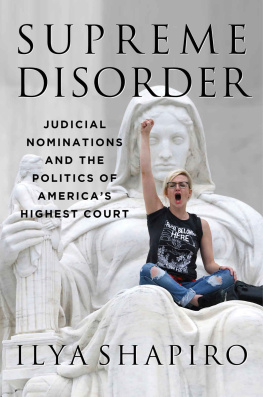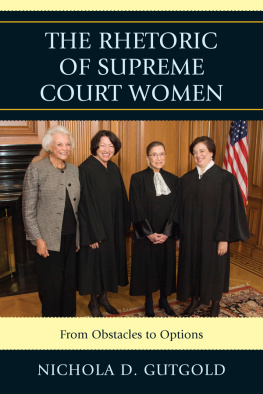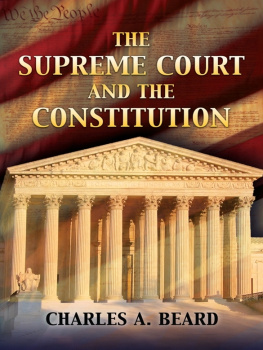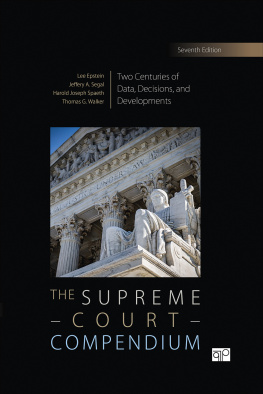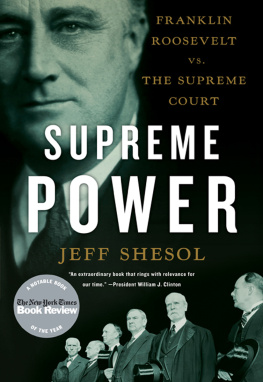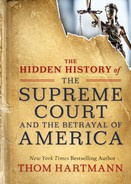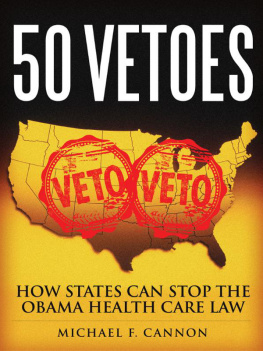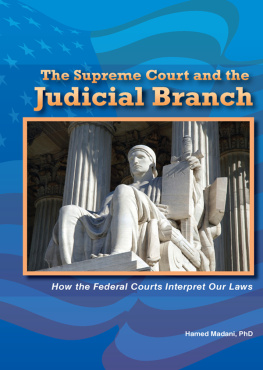Ilya Shapiro - Cato Supreme Court Review, 2012-2013
Here you can read online Ilya Shapiro - Cato Supreme Court Review, 2012-2013 full text of the book (entire story) in english for free. Download pdf and epub, get meaning, cover and reviews about this ebook. year: 2013, publisher: Cato Institute, genre: Politics. Description of the work, (preface) as well as reviews are available. Best literature library LitArk.com created for fans of good reading and offers a wide selection of genres:
Romance novel
Science fiction
Adventure
Detective
Science
History
Home and family
Prose
Art
Politics
Computer
Non-fiction
Religion
Business
Children
Humor
Choose a favorite category and find really read worthwhile books. Enjoy immersion in the world of imagination, feel the emotions of the characters or learn something new for yourself, make an fascinating discovery.
- Book:Cato Supreme Court Review, 2012-2013
- Author:
- Publisher:Cato Institute
- Genre:
- Year:2013
- Rating:3 / 5
- Favourites:Add to favourites
- Your mark:
- 60
- 1
- 2
- 3
- 4
- 5
Cato Supreme Court Review, 2012-2013: summary, description and annotation
We offer to read an annotation, description, summary or preface (depends on what the author of the book "Cato Supreme Court Review, 2012-2013" wrote himself). If you haven't found the necessary information about the book — write in the comments, we will try to find it.
Ilya Shapiro: author's other books
Who wrote Cato Supreme Court Review, 2012-2013? Find out the surname, the name of the author of the book and a list of all author's works by series.
Cato Supreme Court Review, 2012-2013 — read online for free the complete book (whole text) full work
Below is the text of the book, divided by pages. System saving the place of the last page read, allows you to conveniently read the book "Cato Supreme Court Review, 2012-2013" online for free, without having to search again every time where you left off. Put a bookmark, and you can go to the page where you finished reading at any time.
Font size:
Interval:
Bookmark:
 CATO
CATO
SUPREME COURT
REVIEW
20122013
 CATO
CATO
SUPREME COURT
REVIEW
20122013
| ROGER PILON Publisher | ILYA SHAPIRO Editor in Chief |
| TREVOR BURRUS Associate Editor | ROBERT A. LEVY Associate Editor |
| TIMOTHY LYNCH Associate Editor | WALTER OLSON Associate Editor |
| Jonathan H. Adler Case Western Reserve University | Richard A. Epstein New York University | Mark K. Moller DePaul University |
| Lynn A. Baker University of Texas | Elizabeth Price Foley Florida International University | David G. Post Temple University |
| Randy E. Barnett Georgetown University | Nicole Stelle Garnett University of Notre Dame | Saikrishna B. Prakash University of San Diego |
| David E. Bernstein George Mason University | Marci A. Hamilton Yeshiva University | Adam C. Pritchard University of Michigan |
| Lillian R. BeVier University of Virginia | James Huffman Lewis & Clark College | Glenn Harlan Reynolds University of Tennessee |
| G. Marcus Cole Stanford University | Gary Lawson Boston University | Nicholas Quinn Rosenkranz Georgetown University |
| James W. Ely Jr. Vanderbilt University | David N. Mayer Capital University | Ilya Somin George Mason University |

The Cato Institute
1000 Massachusetts Ave., N.W.
Washington, D.C. 20001
Copyright 2013 by the Cato Institute.
All rights reserved.
1000 Massachusetts Ave., N.W.
Washington, D.C. 20001
www.cato.org
The Restoration of Constitutional Order
The Court (Belatedly) Attempts to Invoke Reason and Principle
The Alien Tort Statutes Jurisdictional Universalism in Retreat
Another Win for that Doggone Fourth Amendment
Koontz, Arkansas Game & Fish, and the Future of the Takings Clause
Class Certification in Amgen and Comcast
AID v. AOSI and the First Amendment
Font size:
Interval:
Bookmark:
Similar books «Cato Supreme Court Review, 2012-2013»
Look at similar books to Cato Supreme Court Review, 2012-2013. We have selected literature similar in name and meaning in the hope of providing readers with more options to find new, interesting, not yet read works.
Discussion, reviews of the book Cato Supreme Court Review, 2012-2013 and just readers' own opinions. Leave your comments, write what you think about the work, its meaning or the main characters. Specify what exactly you liked and what you didn't like, and why you think so.


